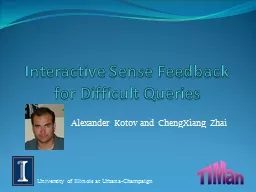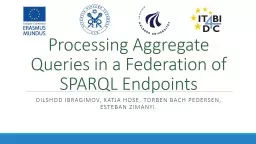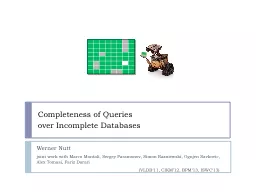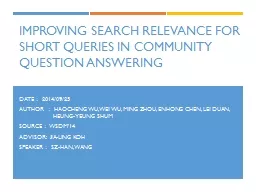PPT-Interactive Sense Feedback for Difficult Queries
Author : natalia-silvester | Published Date : 2017-05-04
Alexander Kotov and ChengXiang Zhai University of Illinois at UrbanaChampaign Roadmap Query Ambiguity Interactive Sense Feedback Experiments Upperbound performance
Presentation Embed Code
Download Presentation
Download Presentation The PPT/PDF document "Interactive Sense Feedback for Difficult..." is the property of its rightful owner. Permission is granted to download and print the materials on this website for personal, non-commercial use only, and to display it on your personal computer provided you do not modify the materials and that you retain all copyright notices contained in the materials. By downloading content from our website, you accept the terms of this agreement.
Interactive Sense Feedback for Difficult Queries: Transcript
Download Rules Of Document
"Interactive Sense Feedback for Difficult Queries"The content belongs to its owner. You may download and print it for personal use, without modification, and keep all copyright notices. By downloading, you agree to these terms.
Related Documents














